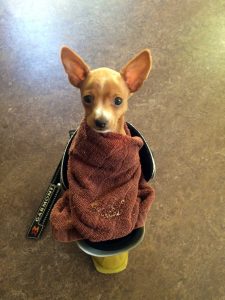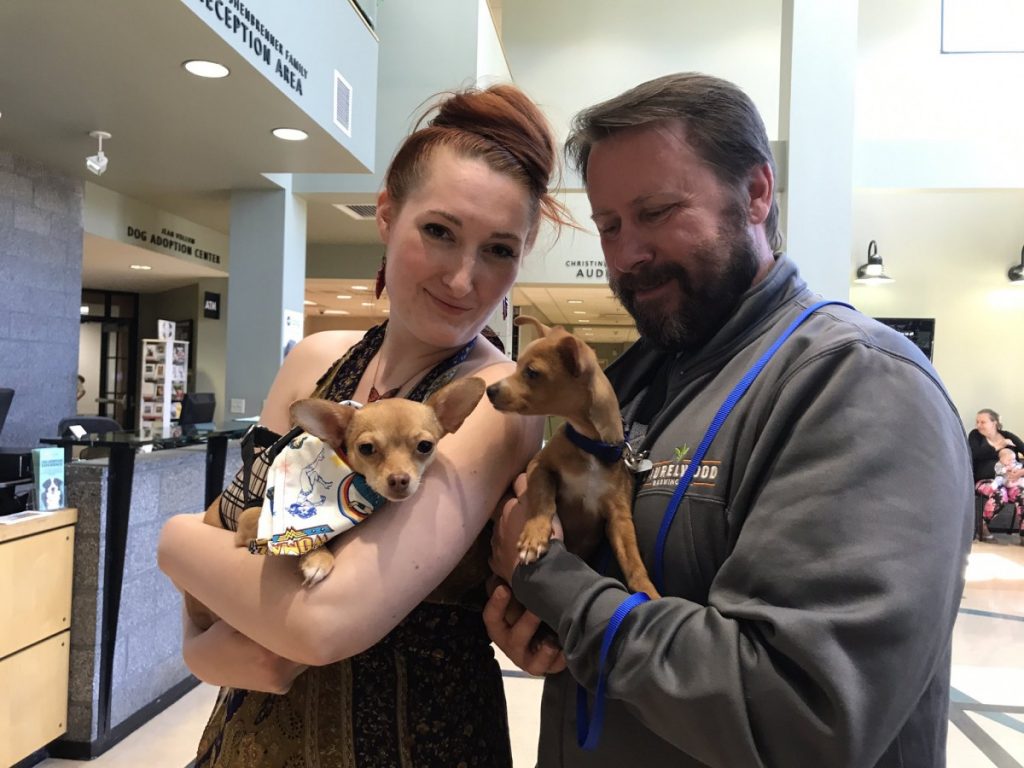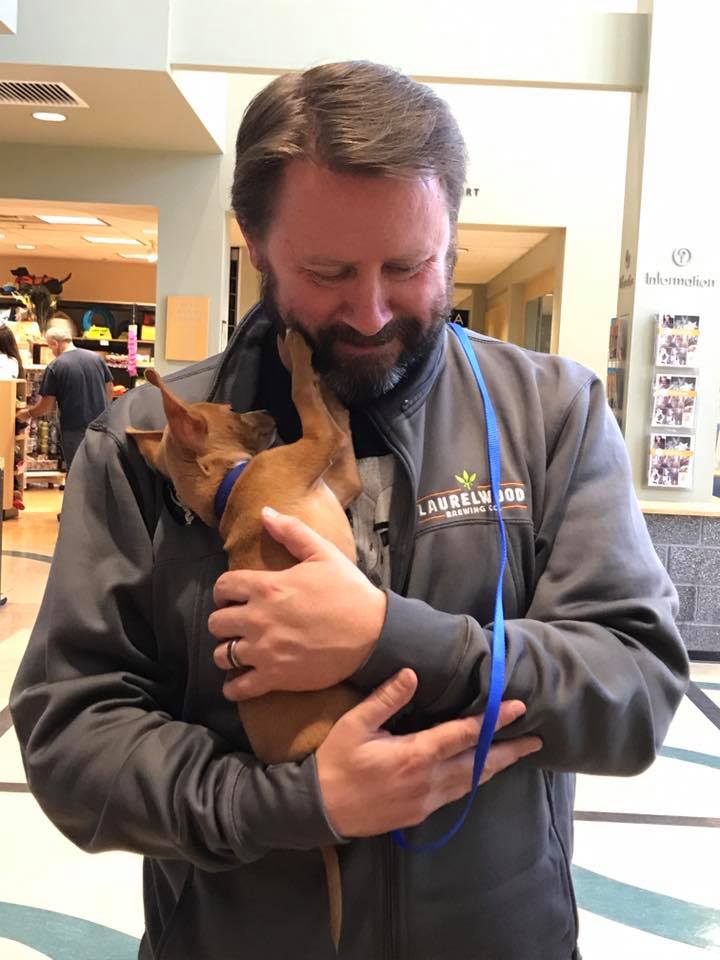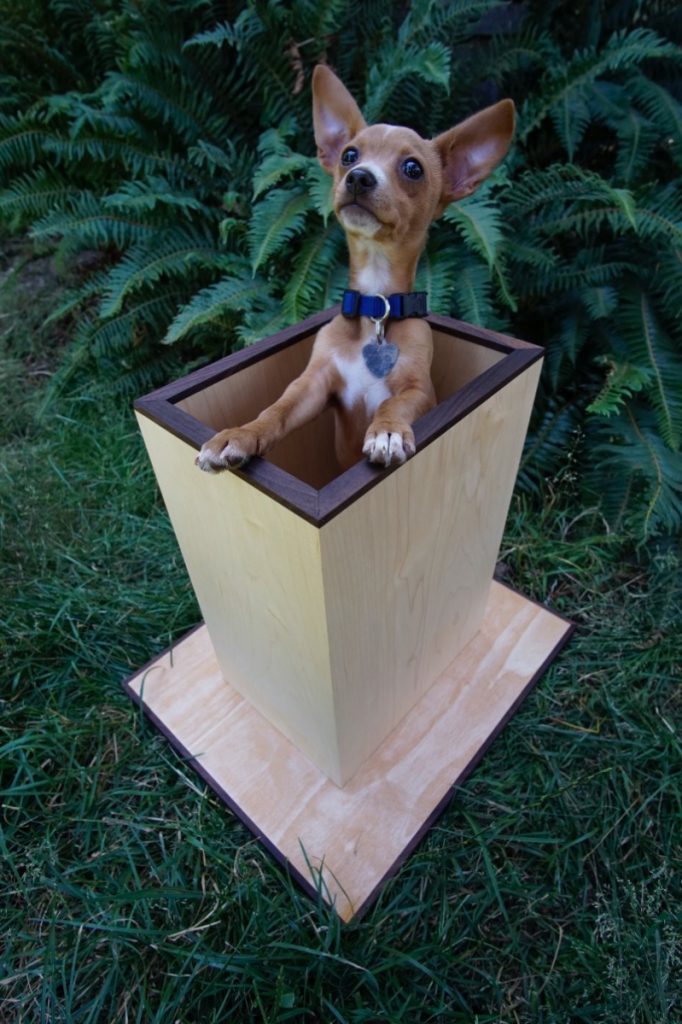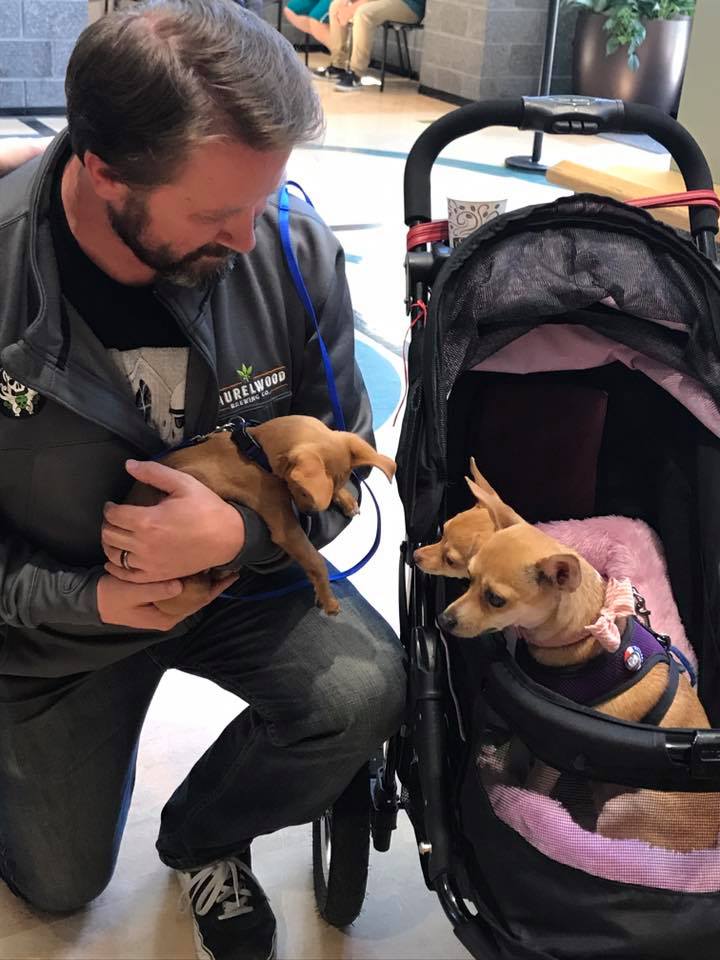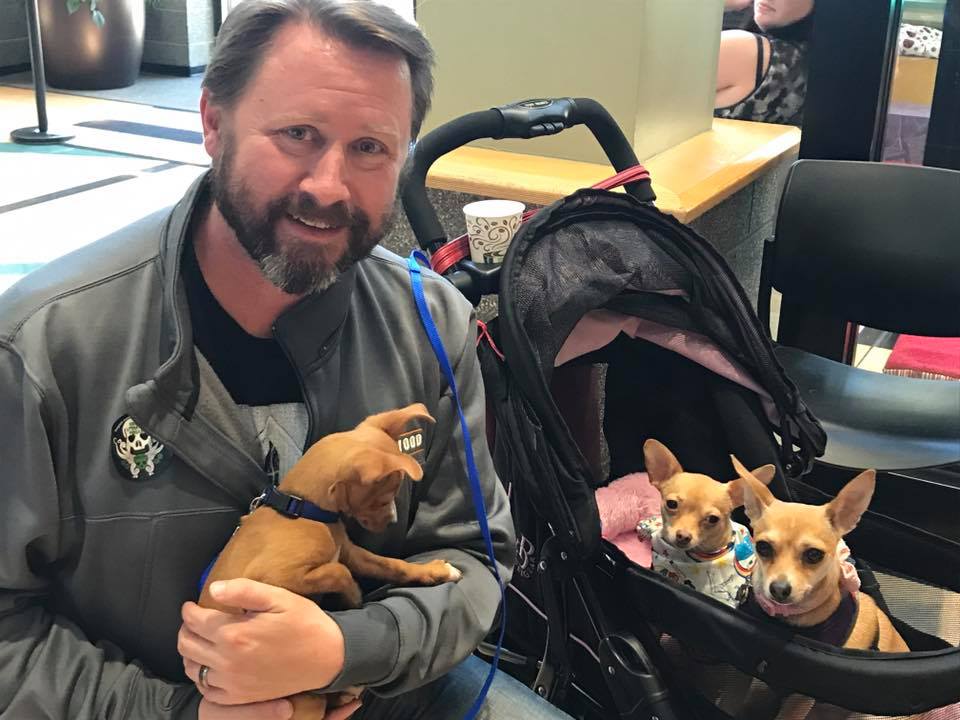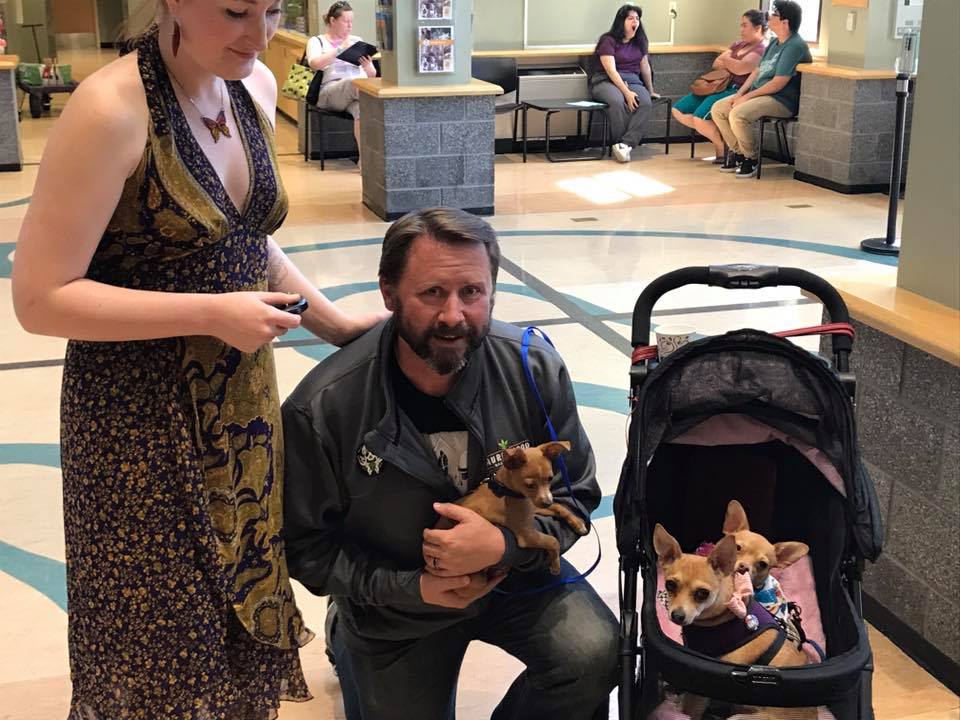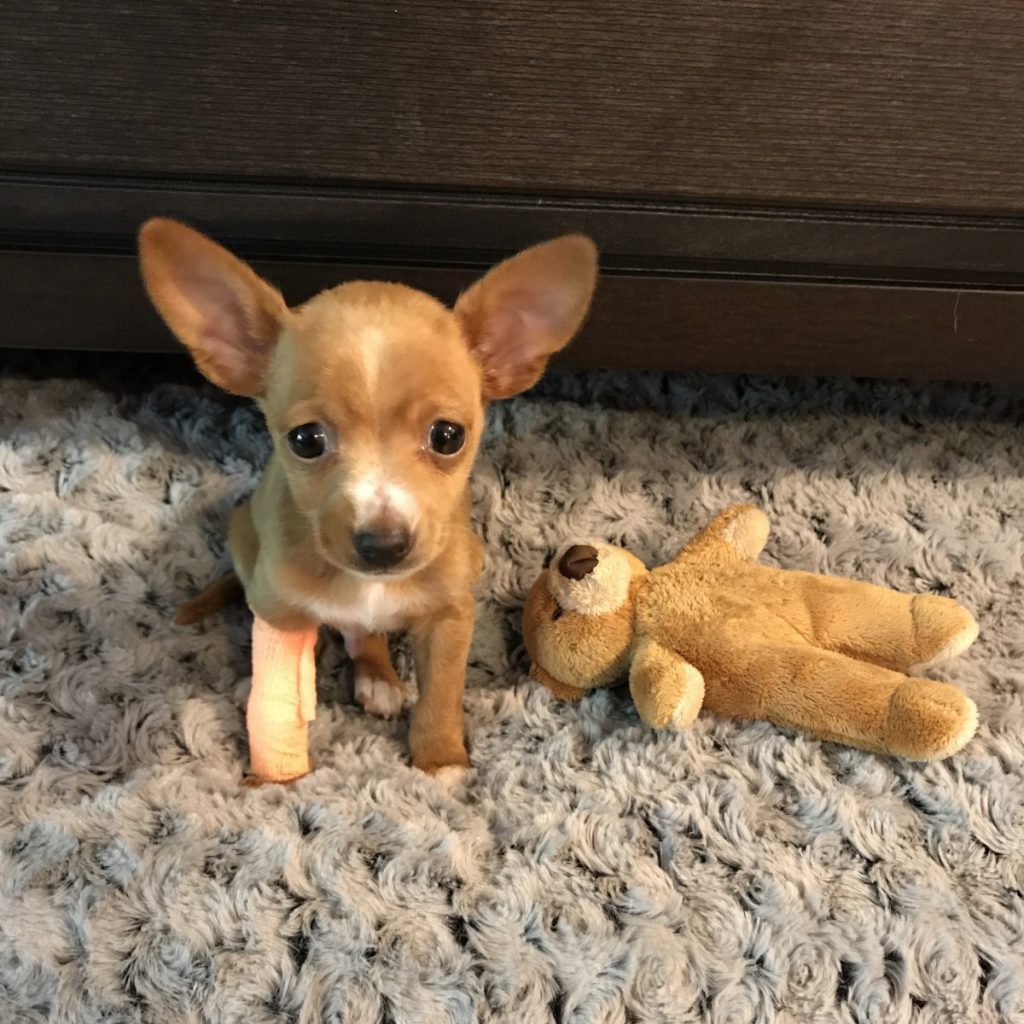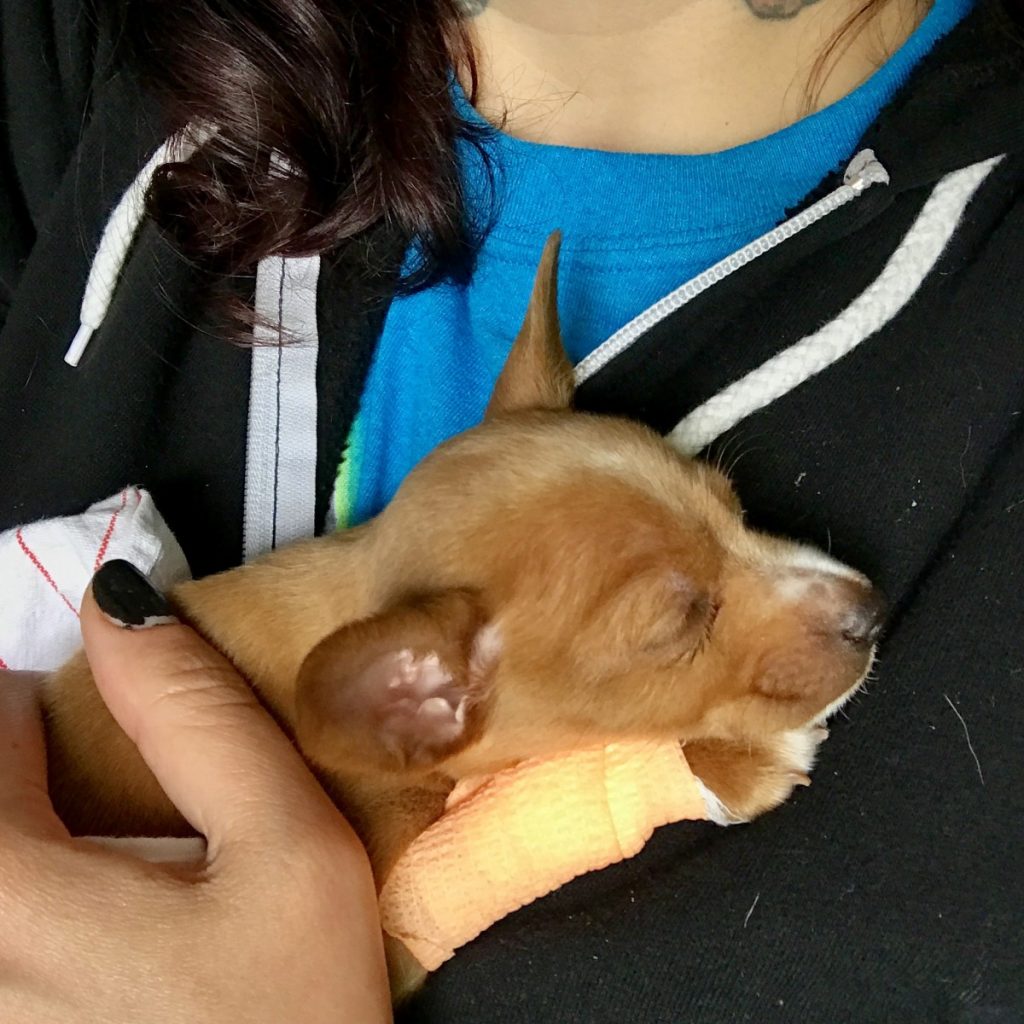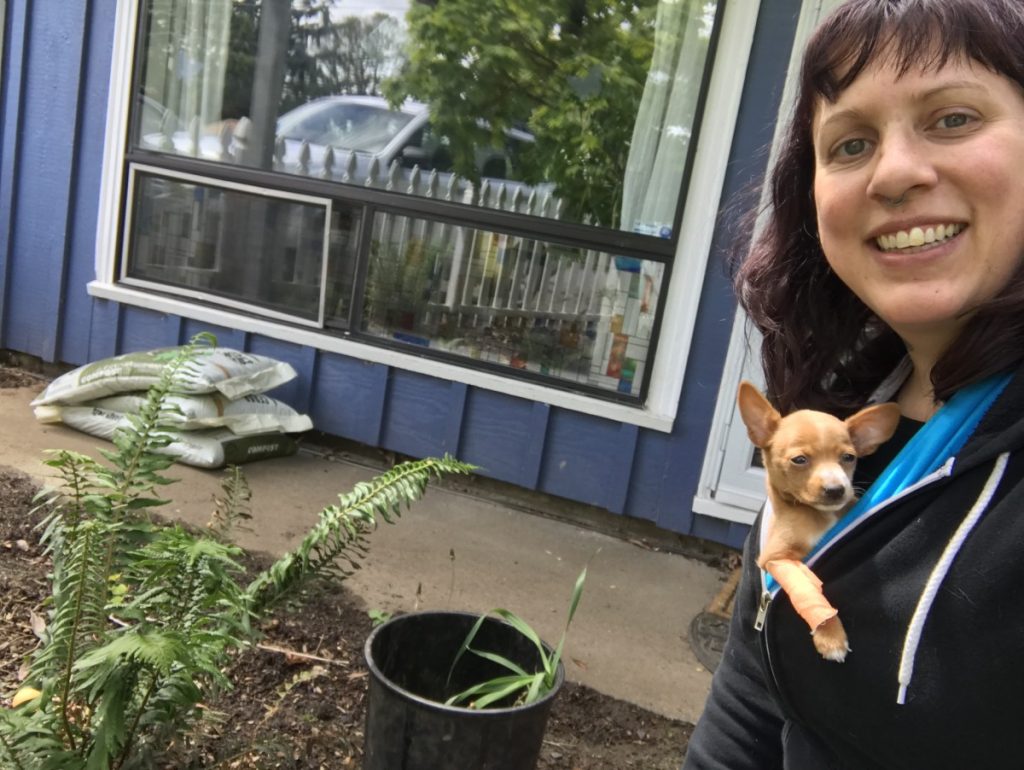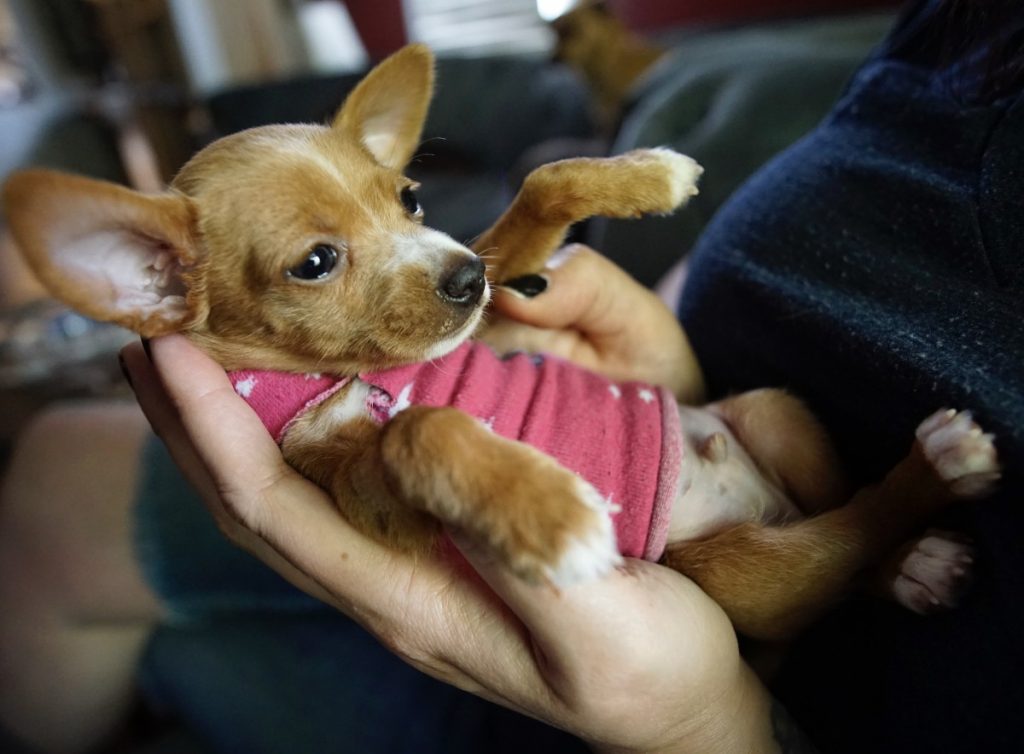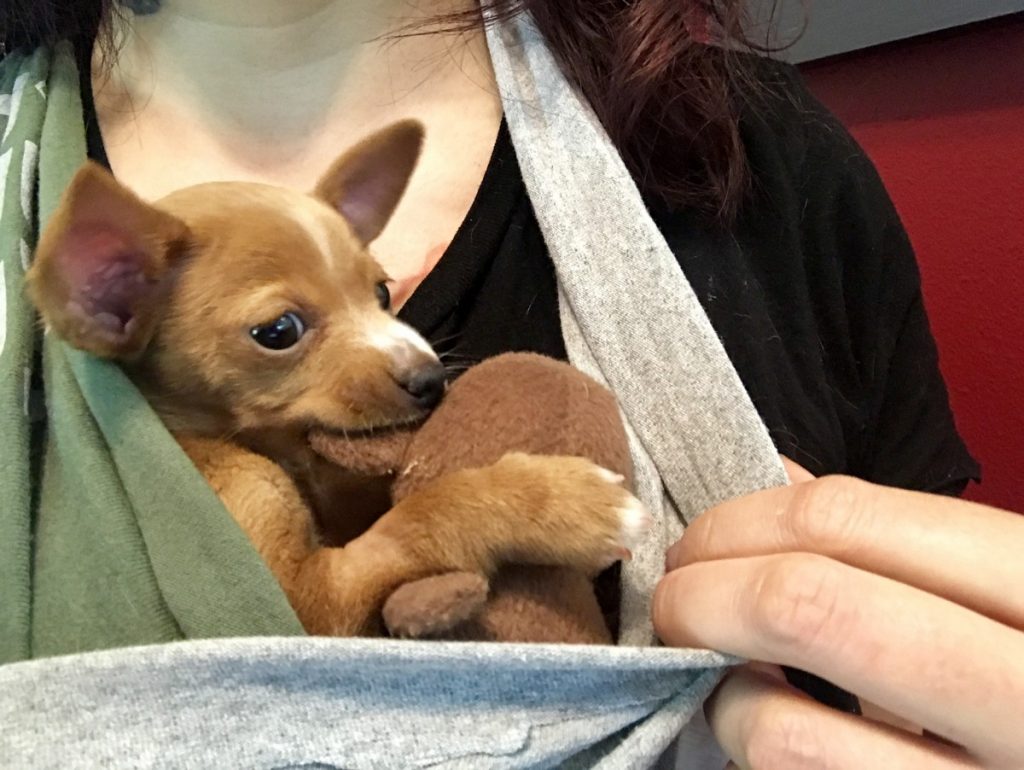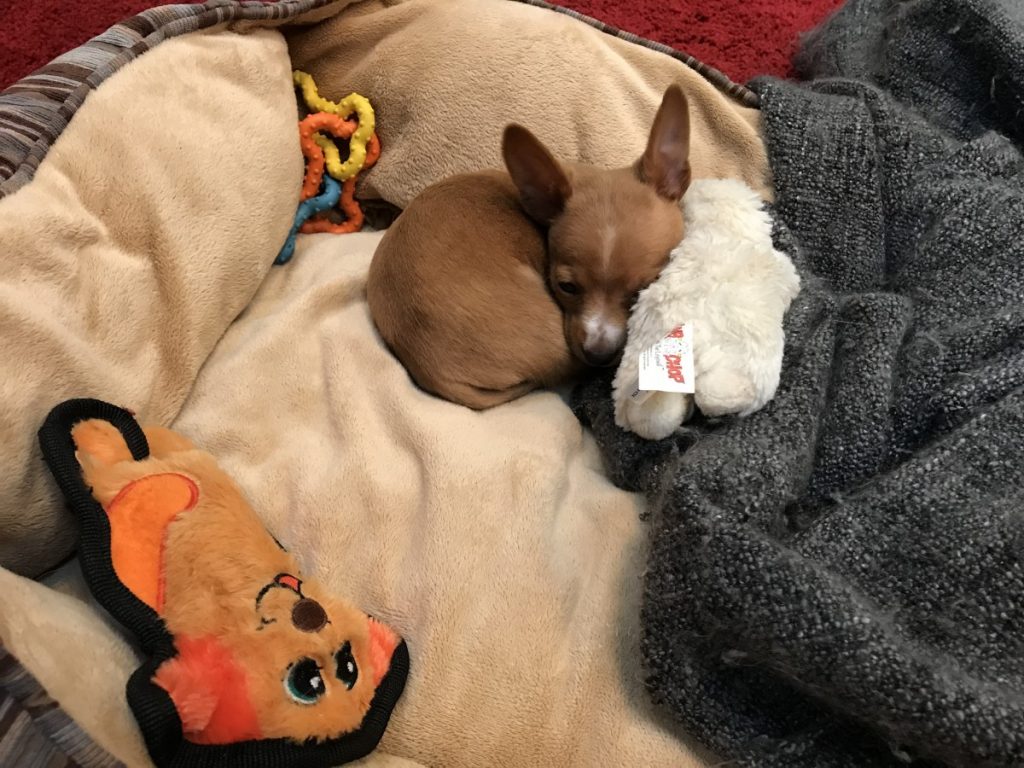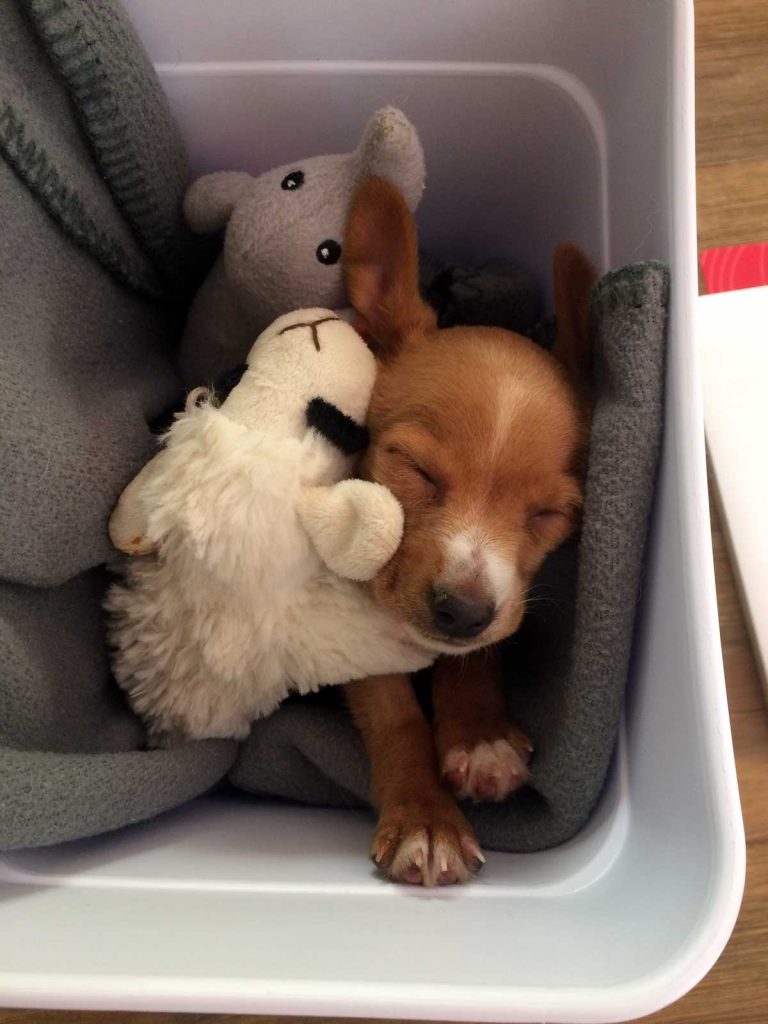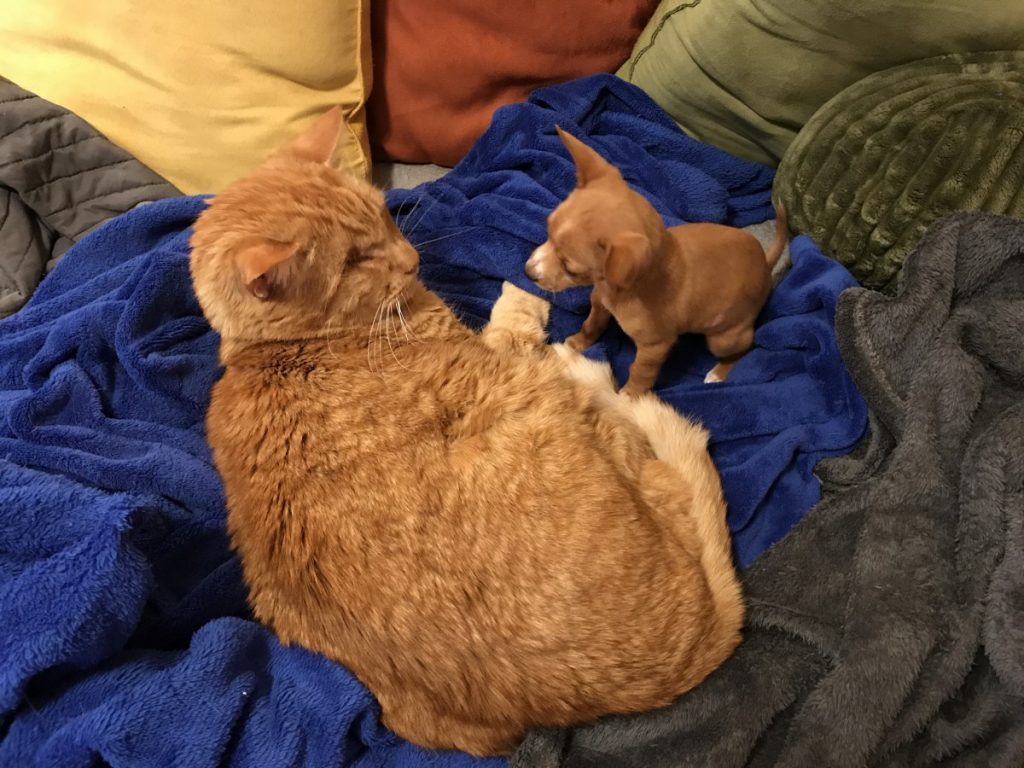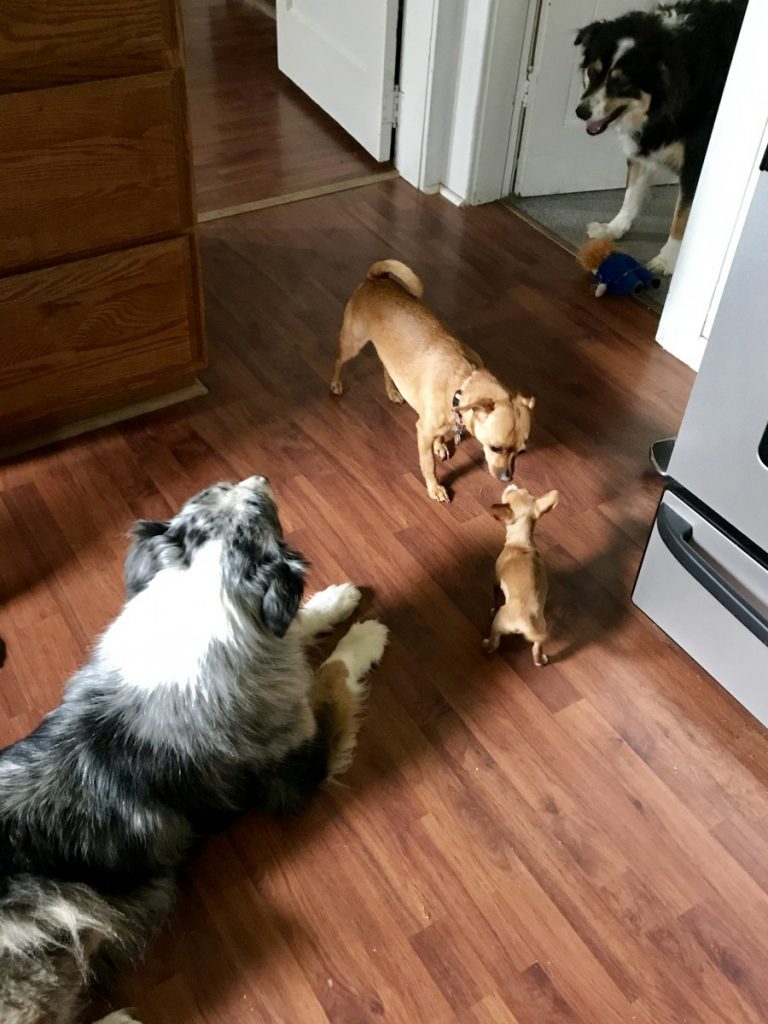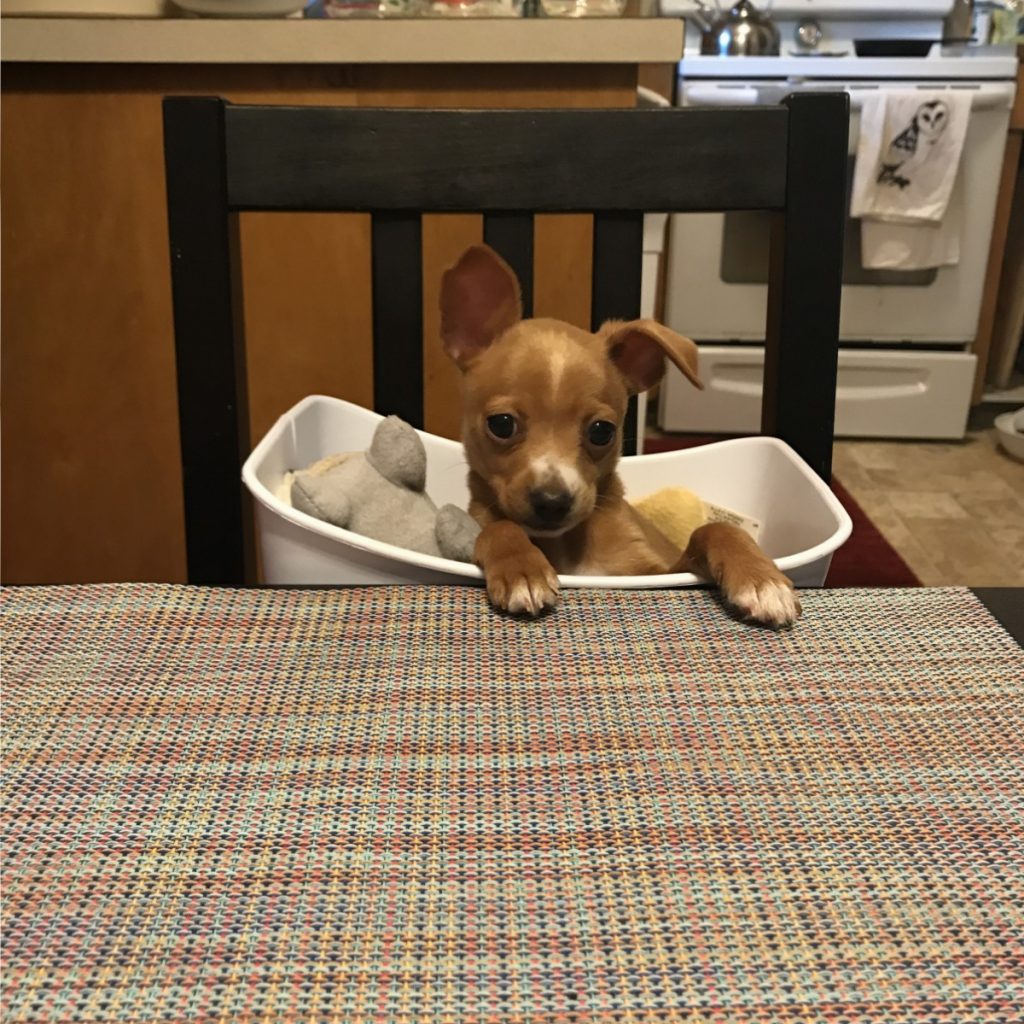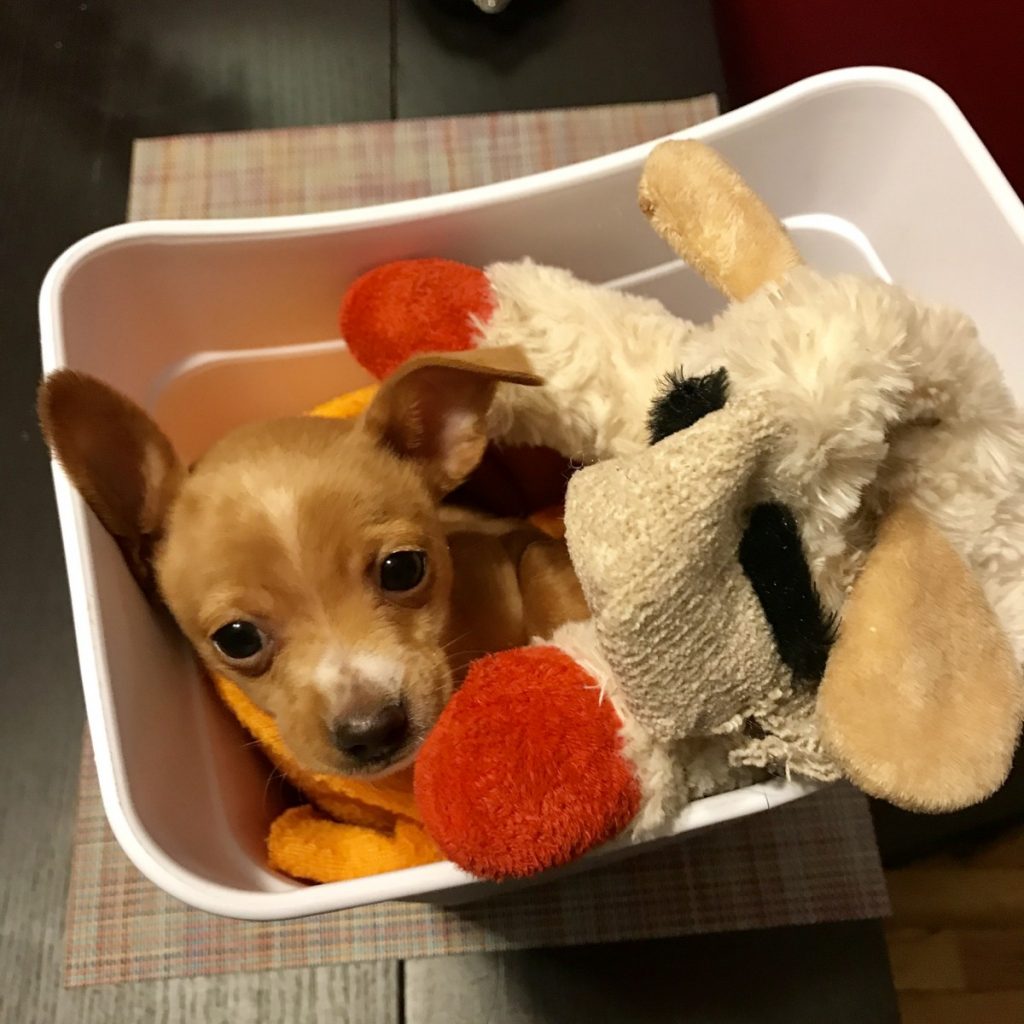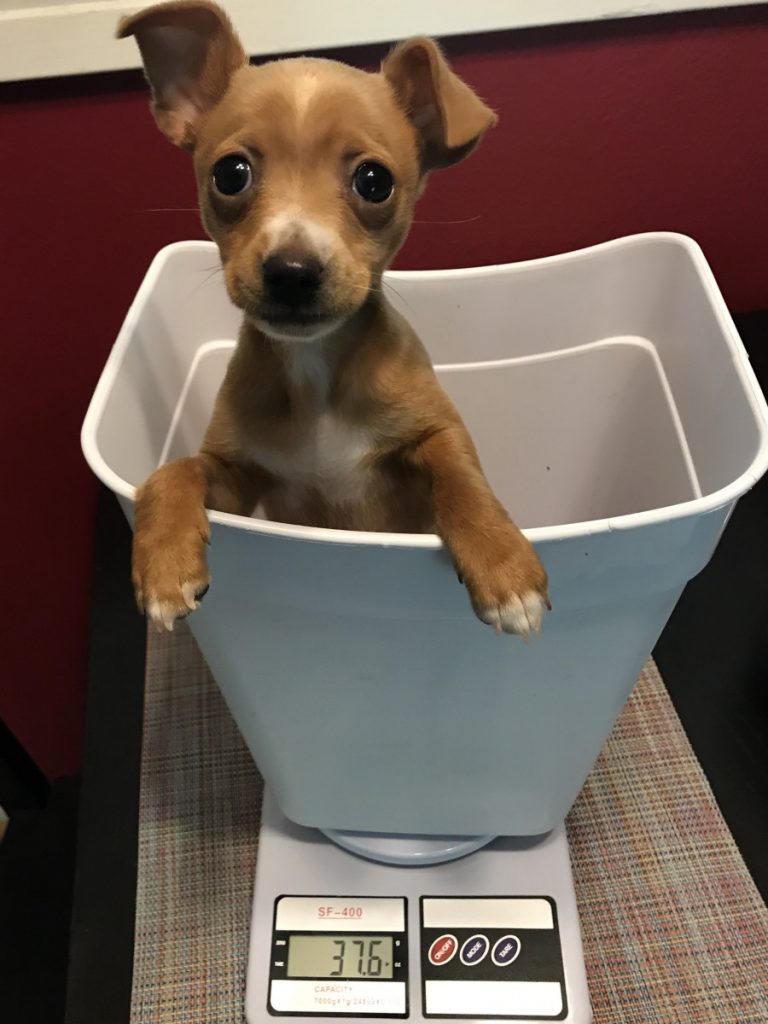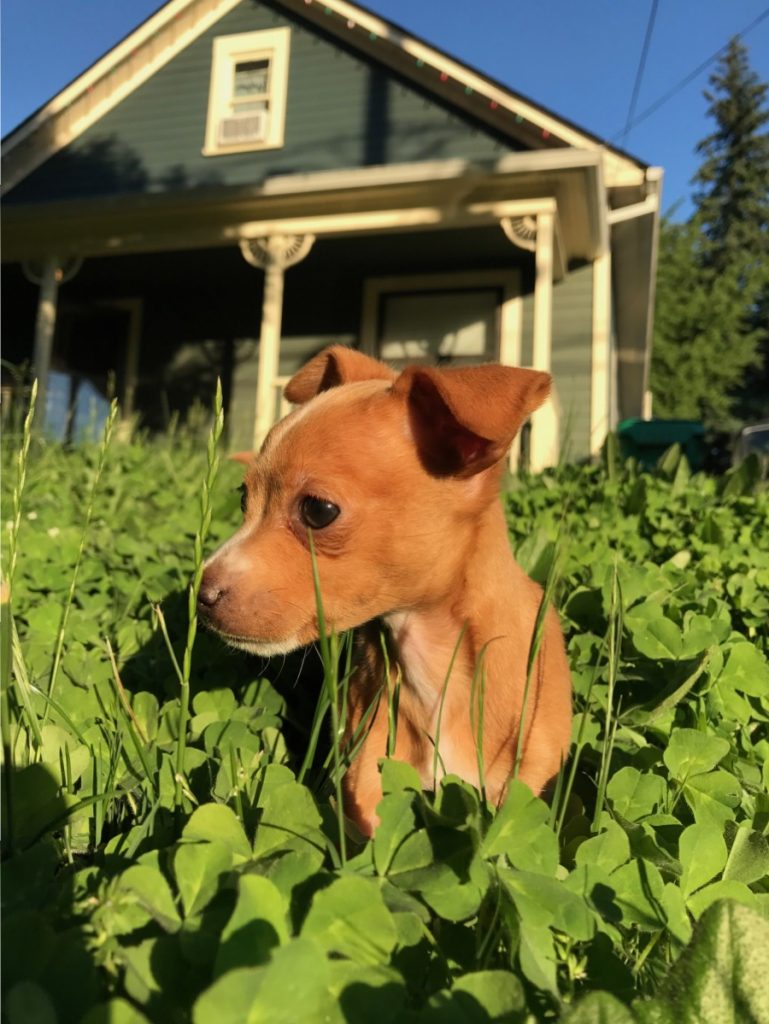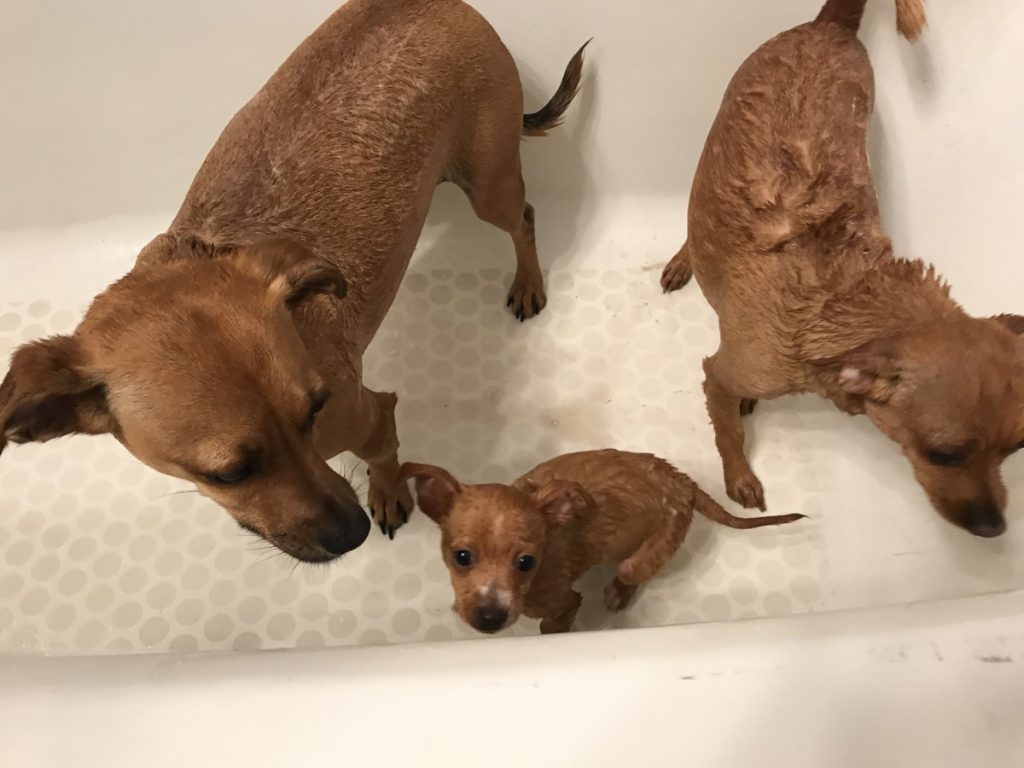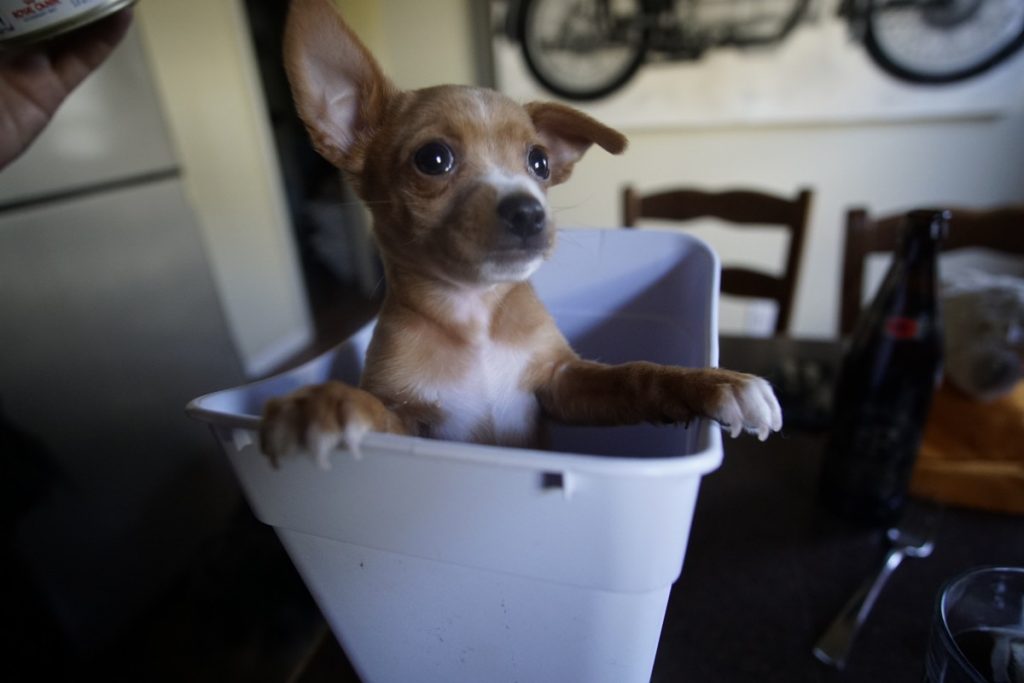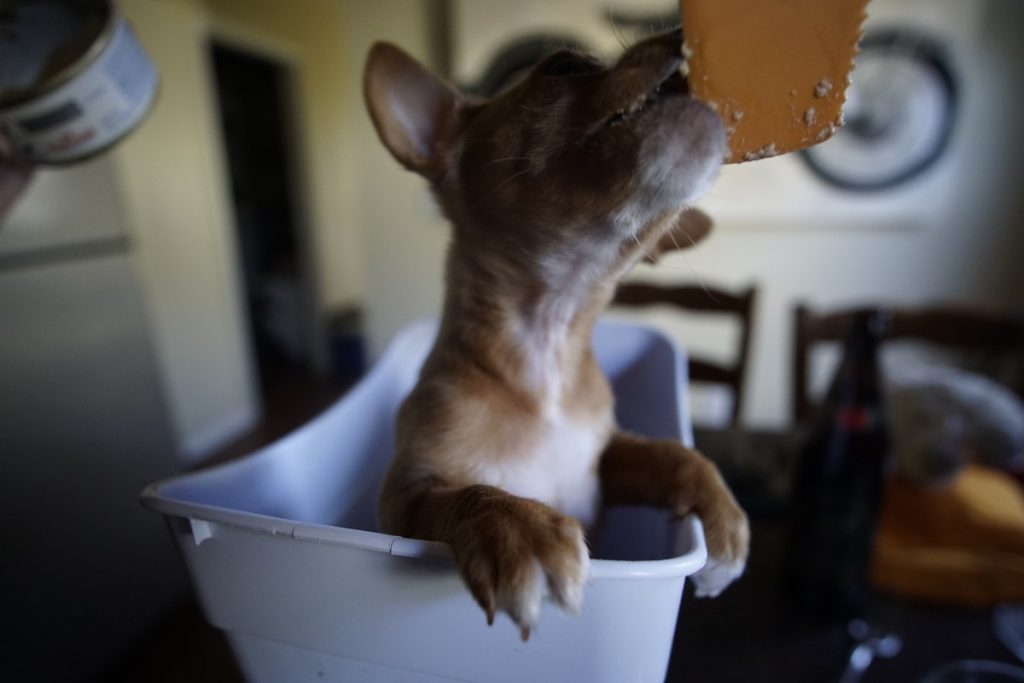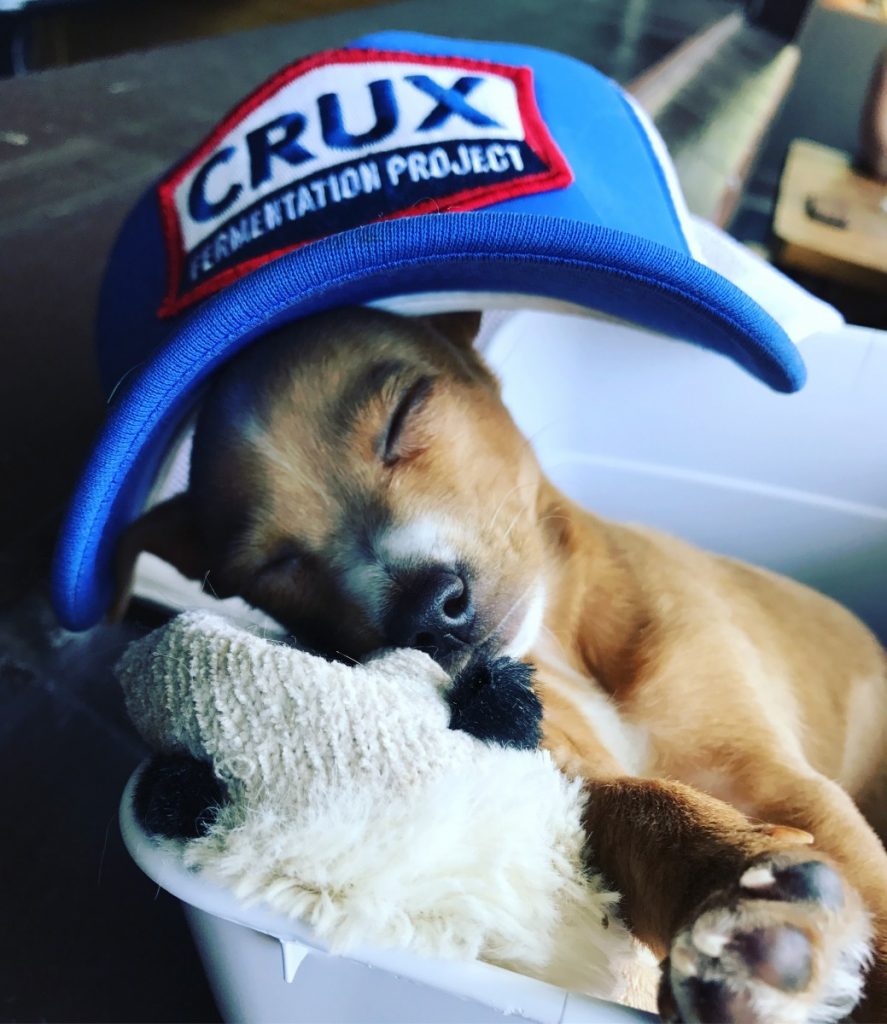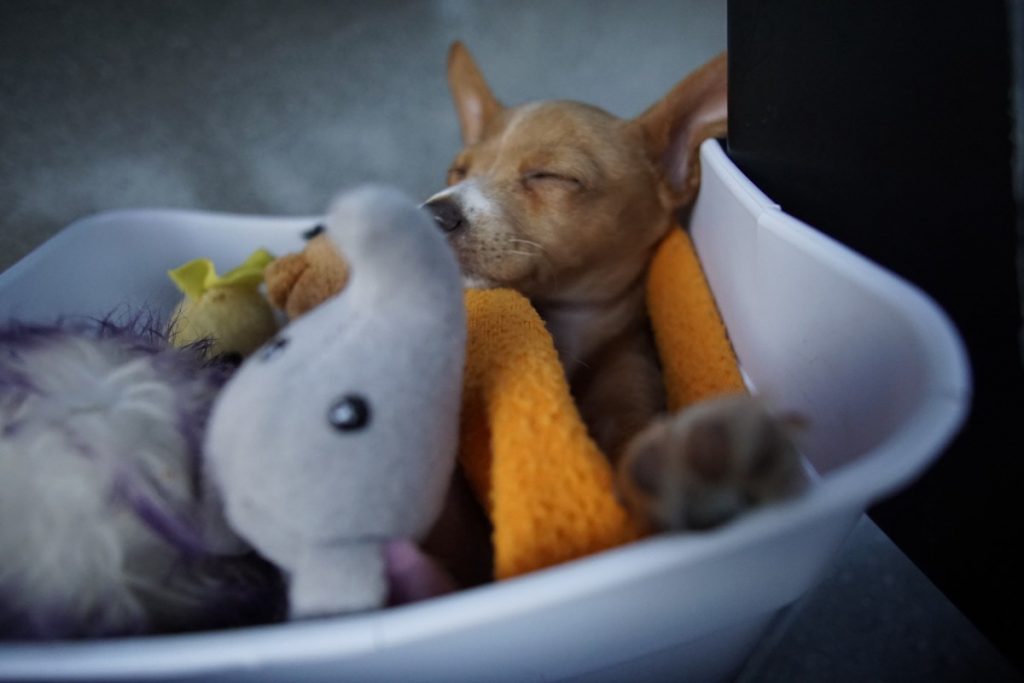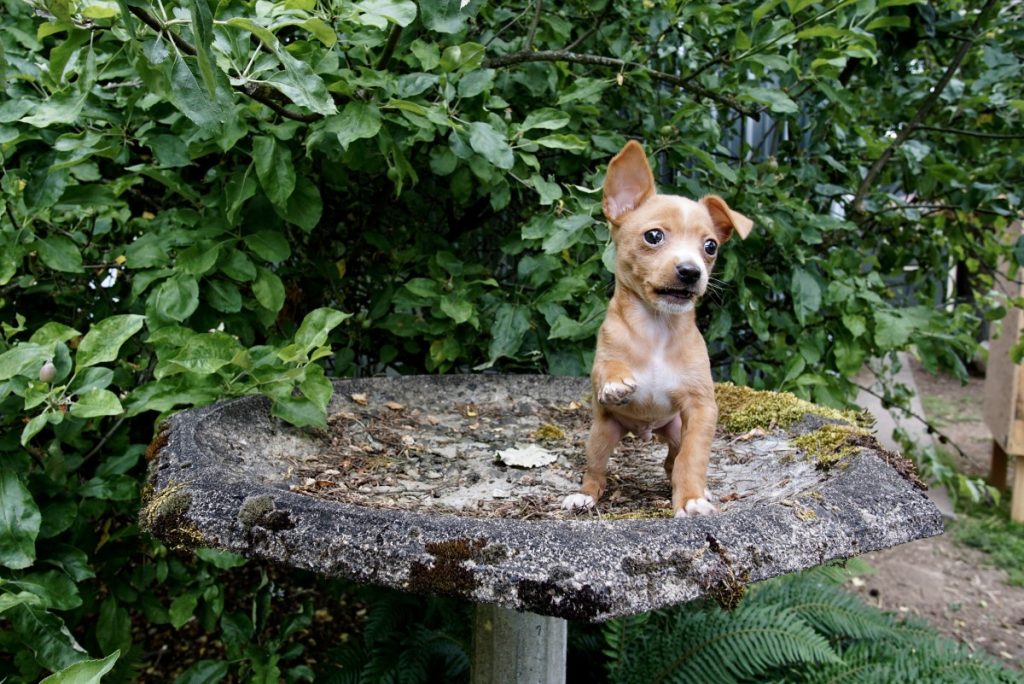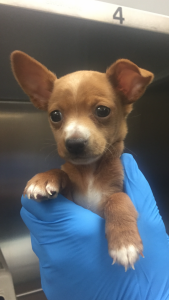
Have you ever heard the term “megaesophagus?” It’s not the name of a Muppet or a rare dinosaur, but a serious condition that can affect dogs, cats, horses and even humans. Recently, a tiny Chihuahua mix puppy diagnosed with this condition needed help, and OHS was able to step up.
In early June, OHS Second Chance received an urgent call for assistance from Benton Franklin Humane Society in Kennewick, Washington. Could OHS take in a tiny puppy with immediate and ongoing medical needs?
The puppy had managed to ingest a small rock, which needed to be surgically removed. He was dehydrated and vomiting constantly. He was diagnosed with megaesophagus, and Benton Franklin did not have the resources to help him.
OHS operates a state-of-the-art veterinary hospital and has a veterinarian on staff, Dr. Margaret Wixson, who is experienced with megaesophagus in pets. Since OHS did have the resources and experience to help this puppy, staff at both shelters sprang into action to get him to Portland.
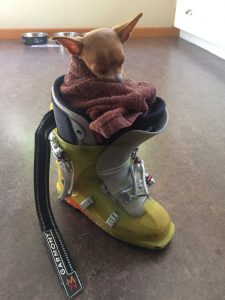
“I fostered a megaesophagus kitten many years ago, and she had a successful outcome. And when I was in vet school, my own large adult dog was diagnosed with it. So when I met Konnichihuahua, I was experienced in the management of the condition,” said Dr. Wixson.
The tiny Chihuahua mix pup was affectionately named Konnichihuahua. When he arrived at OHS, Konnichihuahua first underwent surgery to remove the rock from his stomach. After surgery, Dr. Wixson took him home with her to see how he would recover.
“He was so small and fragile, and I felt that I would be able to give him his best shot. So I took him home for the first several days to figure out how to feed him,” said Dr. Wixson. Konnichihuahua was so tiny that he fit in a ski boot for his first upright feedings (see photos) – thanks to some ingenuity from Dr. Wixson!
Photos of Konnichihuahua at Dr. Wixson’s Home
What is Megaesophagus?
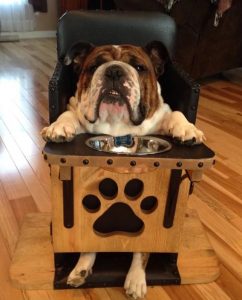
Megaesophagus (ME) is an enlarged esophagus, which is the tube that passes food and water from the mouth to the stomach. In animals with this condition, the esophagus does not function properly to propel food or water into the stomach. The result is that ingested food or liquid remains in the esophagus and never makes it to the stomach, which causes the esophagus to become enlarged.
ME can occur in dogs of any age, and can be caused by genetic factors or be a symptom of another condition.
“A lot of megaesophagus management involves trial and error in the feedings,” said Dr. Wixson. “Regurgitation causes inflammation of the esophagus, which causes more regurgitation, and so on. So, minimizing the regurgitation is important. This also decreases the risk of food particles being inhaled into the lungs, which can cause life-threatening aspiration pneumonia.”
Dogs with megaesophagus must be kept upright during and after eating so gravity can help food and liquids get down to the stomach. To do this, many people use a special feeding chair called a Bailey chair, which looks a bit like a high chair and holds the dog upright during feedings. Shown at right is an example from the site Bailey Chairs for Dogs.
On to Foster Care

After a few days with Dr. Wixson, Konnichihuahua was deemed ready to go home with an experienced foster care volunteer. Amanda Ferguson stepped up to help.
“I foster pets for OHS regularly. Since I work from home, I can take special needs dogs who need care and supervision throughout the day, as long as they can get along with the other dogs and cat in my home,” said Ferguson.
“I love all dogs, but I have a special place in my heart for Chihuahuas. So when I saw Konnichihuahua’s foster plea and photo—he was so tiny and adorable, and despite his serious medical challenges, deserved a chance to live and thrive—my heart just melted and I had to take him in as a foster.”
Konnichihuahua, shortened to Kenny, was six weeks old and weighed just one pound, four ounces when Amanda took him home to foster.

“This was the first time I have dealt with megaesophagus, so I have learned an enormous amount about the condition. Dr. Wixson provided me with resources and plenty of advice and ideas. She also pointed me to the Yahoo group (https://groups.yahoo.com/neo/groups/megaesophagus/info) which is one of the best sources of information out there on the condition,” said Ferguson.
“Early on, Kenny was so small and his esophagus was so big that you could see him struggling to breathe. He had difficulty keeping any food down. He was so tiny and sickly at first. It was heartbreaking to watch,” said Ferguson.
The rock that had been in his stomach caused additional inflammation in his esophagus, and as a result he had been regurgitating food and aspirating it. This caused Kenny to develop aspiration pneumonia, a potentially deadly illness, so he received round-the-clock care in his foster home.
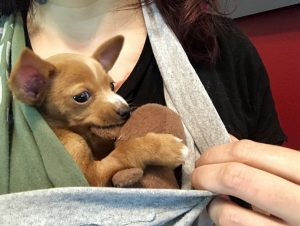
Ferguson recalls: “At first, I was feeding him every four hours, even overnight, and he had to stay upright for at least 45 minutes after each meal. So I cut t-shirts into makeshift slings so I could keep him upright against my chest and still have use of my hands. I carried him like that almost all day, every day, until his antibiotics started to clear up the pneumonia, he healed from the stomach surgery, and he started being able to keep food down more often.
This fragile, tiny puppy was a fighter! He began to gain weight, and as he started to have more energy, his spunky personality started to emerge. It became increasingly difficult to keep him in the sling for so long.”

Dr. Wixson came up with a modified Bailey chair for the tiny puppy: she bought a small plastic waste bin, dubbed a “Bailey can.” This provided a way to keep Kenny upright and stable for each feeding while allowing Ferguson to keep her hands free. She says, “I would wrap him in a blanket and stuff his favorite toys around him in the can after each meal so he could nap comfortably or play with his toys while still being upright.”
As Kenny has continued to grow and his condition has improved, he currently does not have to remain upright for very long after each feeding. However, he does still need to be fed five times a day. (“But no longer overnight—I am sleeping again!” notes Ferguson.)
Kenny’s feedings involve tiny individual bites of prescription wet food taken from a spoon. “Dr. Wixson and I have found that to be the best way to manage his condition and prevent him from aspirating and getting pneumonia again,” says Ferguson. “He’s about to outgrow his little Bailey can, so I think it would be best for someone to build him a little wooden bucket or a Bailey chair eventually.”
Video of Kenny in Action
Available for Adoption – Now Adopted!
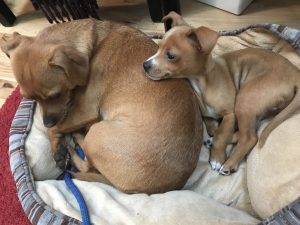
Kenny is a small dog with a big dog attitude. Ferguson says: “He has a big personality. He thinks he’s a big dog ready to take on the world (until a loud noise sends him running for cover under a chair). He will take a stuffed toy that is bigger than he is, lift it with his mouth and shake it hard while growling. It’s hilarious!”
Kenny loves to play with the other dogs in the home, and has learned to be careful when trying to play with cats. He has learned how to climb stairs and use a dog door, despite his tiny size (he still weighs only three pounds).
“He loves to cuddle but is also independent and will go off exploring or napping on his own. It’s so wonderful to see him growing up and acting like a normal, curious, high-energy puppy,” said Ferguson.

Kenny came back to OHS recently for his neuter surgery, now that he is big and strong enough. He is currently available for adoption from his foster home. You can see his full profile on our website here »
Dr. Wixson notes that Konnichihuahua/Kenny has done extremely well so far with the management of his condition. He needs a motivated adopter who is willing and able to put in the time and effort to continue to help him throughout his life.
“While it is always hard to give a foster dog back to the shelter, I’m so excited for him to find his forever home and live a happy life. He will always have special needs that will require extra care. I am so grateful to volunteer for an organization that goes above and beyond to give animals like Kenny a chance to survive and thrive,” said Ferguson.
Kenny Goes Home with a Fantastic Family
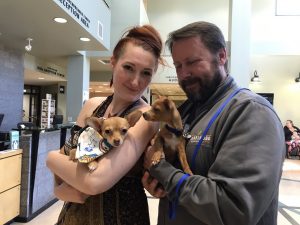
UPDATE 7/3/17: A couple very familiar with OHS read Kenny’s story here and wondered if they could give him the home he needed. Maggie and Troy of Southeast Portland had adopted another special Chihuahua mix from OHS in 2016: Evie, the amazing dog who survived the loss of two legs (story here). Even before they had seen Kenny’s photos, they were so moved by his story that they decided to see if Kenny would be a good fit with Evie and their other dog, Molly.
Today, they met with Amanda and Dr. Wixson to go over Kenny’s needs. Evie and Molly came along to meet Kenny. He was a hit: Molly loves to romp and play with him already, and the three dogs make an adorable tan Chihuahua trio. Kenny is already working his charms on Troy and Maggie, as you can see in the photos below.
Kenny went home with them today, along with a beautiful new handcrafted “Bailey box” generously donated by Cathedral Construction. It was made especially for Kenny to eat in as he continues to grow. (Photos included below)
Kenny (Konnichihuahua) found an excellent home where he will continue to get all the care he needs throughout his life. Kenny and Evie together are truly a small but mighty pair.
Adoption Photos
Photo Gallery: Kenny in Foster Care
